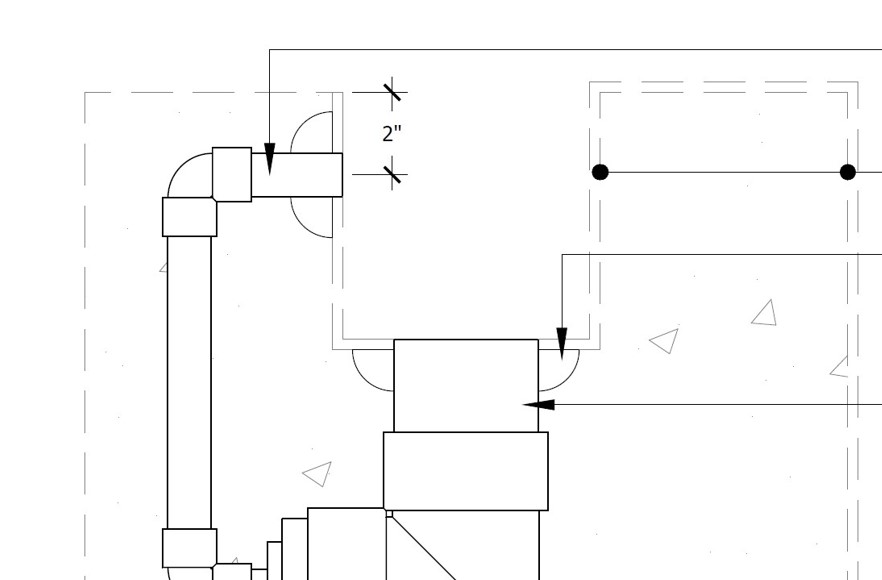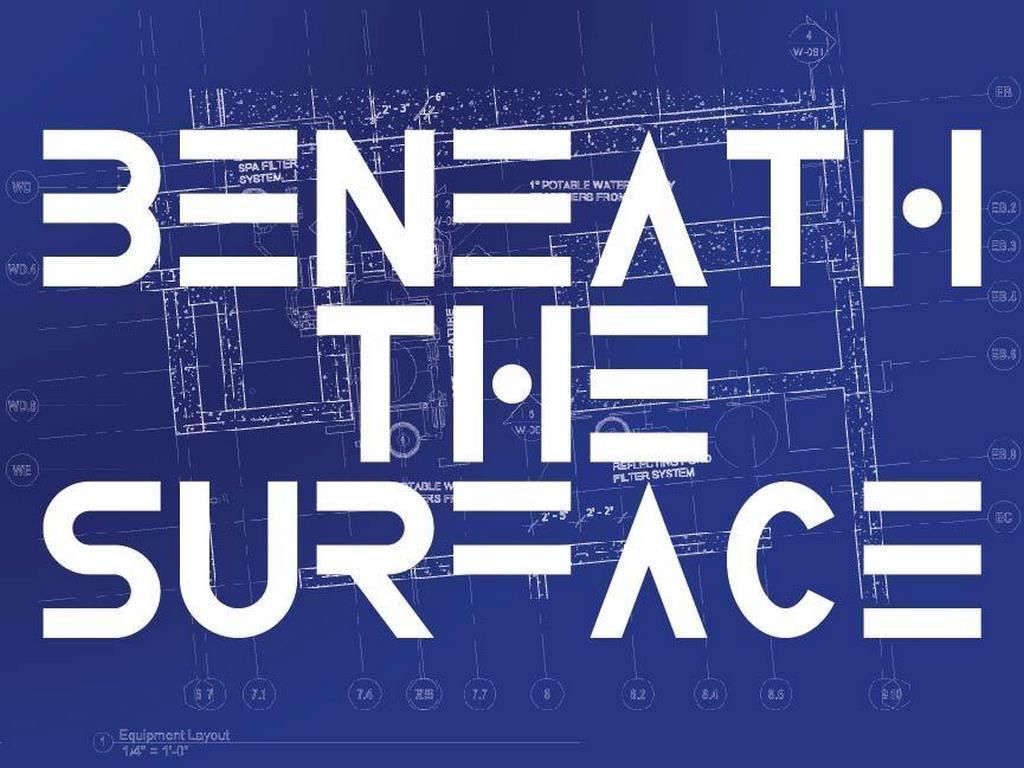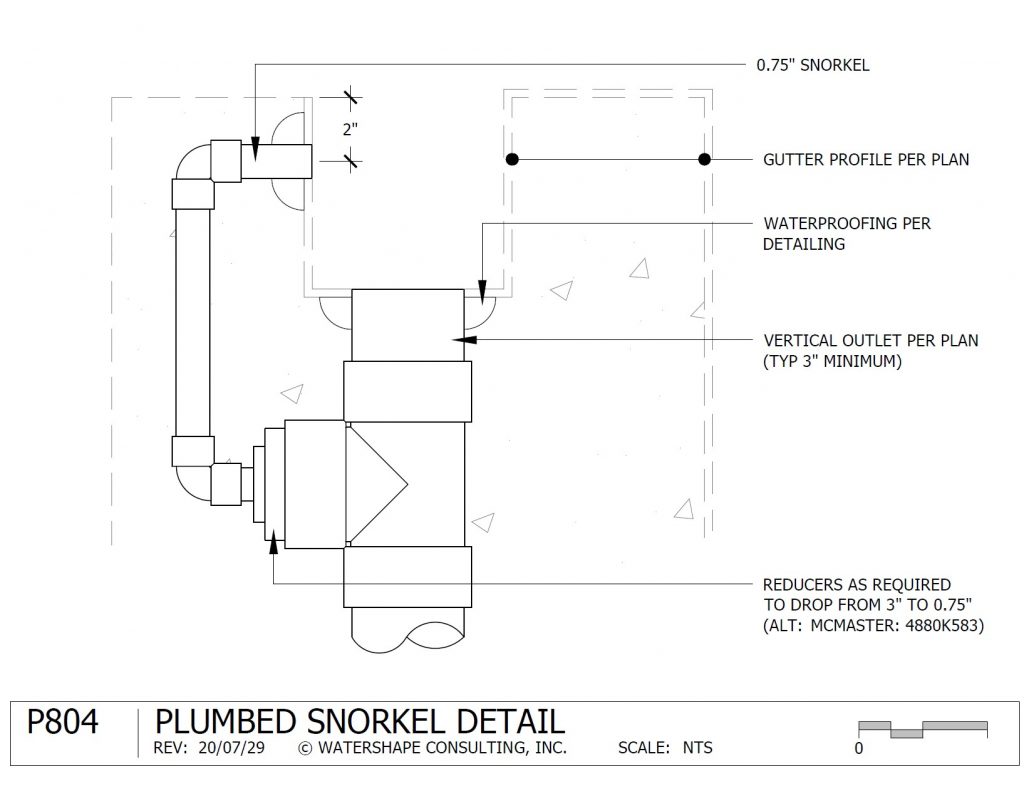P804: Plumbed Snorkel Detail


There’s much more to making a perimeter overflow detail work than meets the eye. What looks like a thin slot at the edge of the water surface conceals the gutter and required plumbing below. This detail shows the dropouts, main drainage line and the snorkel detail necessary for reducing noise from air being sucked into the system.
By Dave Peterson & Richard Kremer
Whenever you plan a gutter, it’s crucial to account for all the plumbing that’s going to be in the wall. One of the common omissions is not including plumbing for a “snorkel” in the plan detail, which will increase the necessary width of the wall or bond beam containing the gutter.
As water flows over the edge in a Lautner edge detail, for example, it will fully cover the pipe opening at the bottom of the gutter because the surface area of the pool is so much greater than inside the gutter. You might only have a quarter inch flowing over the weir, but it can easily accumulate an inch or two in the gutter.
As gravity moves water out of the gutter, the air it pulls in with the water needs somewhere to go. If you don’t have a snorkel like the one shown in this detail, the air being drawn into the plumbing will bubble up through the pipe into the gutter and make an annoying gurgling noise. It’s a common problem in many gravity-fed systems.
As a result, we’ve seen many installations where the sound generates complaints after the fact, requiring an expensive retrofit.
MAKING SPACE

Commonsense dictates you should always account for all the plumbing that’s needed in and around a gutter detail. We’ve run into situations where the plan calls for a 12-inch wall that contains the edge detail. That’s when we hit the breaks and advocate expanding the wall to include the drop outs, the main drainage trunk and the snorkels. It’s not unusual for the 12-inch wall to suddenly expand to 18 inches.
This can be especially important in spa applications where you also have to accommodate plumbing for hydrotherapy jets. In order to place the jets where they need to be for optimum performance and bather comfort, you have to know exactly where the plumbing for the edge overflow system is located.
Otherwise, it becomes a haphazard process of working around the plumbing, which can lead to less-than-optimal jet placement and performance, and there might be portions of the wall that are half plumbed and look like Swiss cheese. That is not good from a structural or hydraulic standpoint.
Having proper wall thickness can also be extremely important in accommodating proper waterproofing in the gutter and plumbing connections. Likewise, knowing the plumbing locations also influences the structural design and steel placement within the wall.
That’s all why its extremely important to stay ahead of the game and coordinate around this detail early on in the planning stages.
David J. Peterson, P.E, IWI, is co-founder of Watershape University and president of Watershape Consulting, Inc. Richard C. Kremer is a project manager for Watershape Consulting.
2004-2023 Watershape Consulting, Inc. All rights reserved. This image is provided for reference and educational purposes only.










